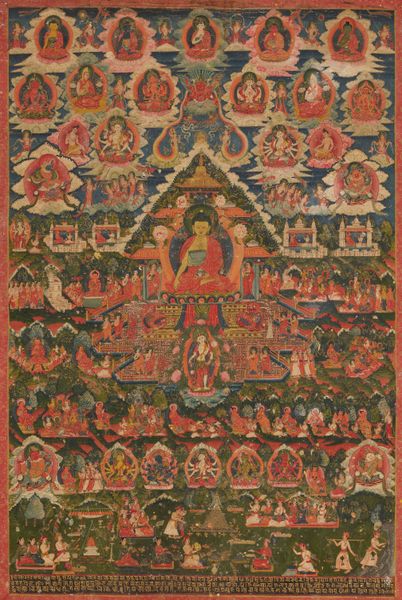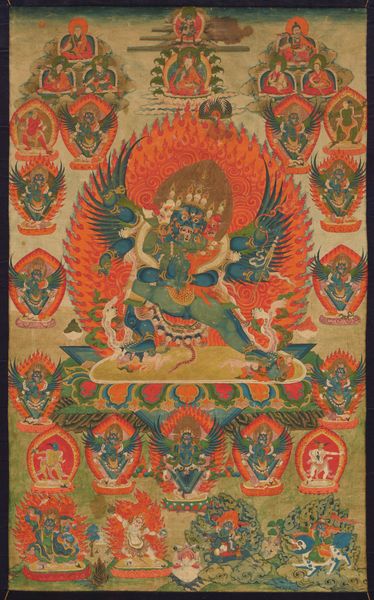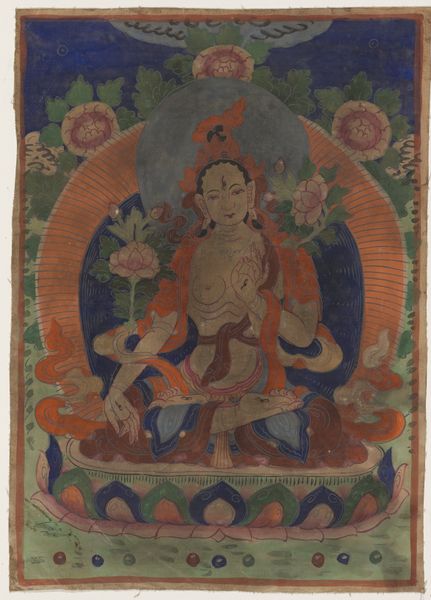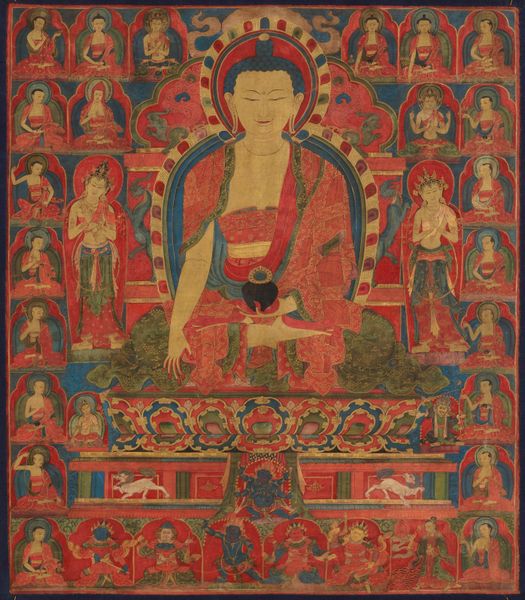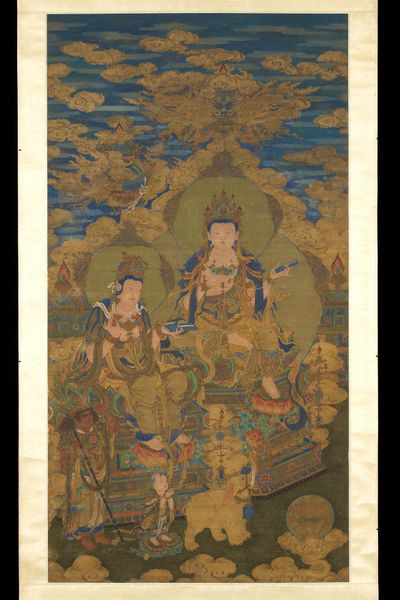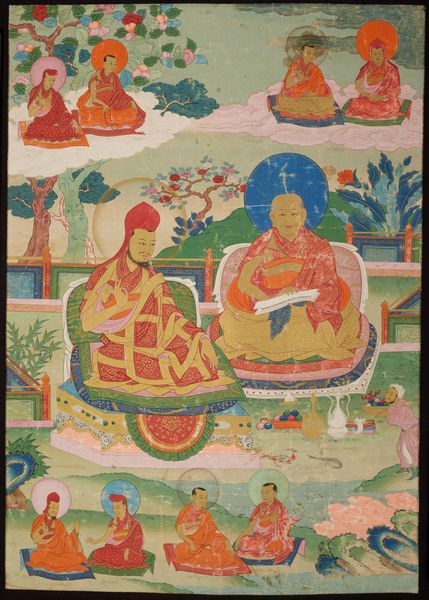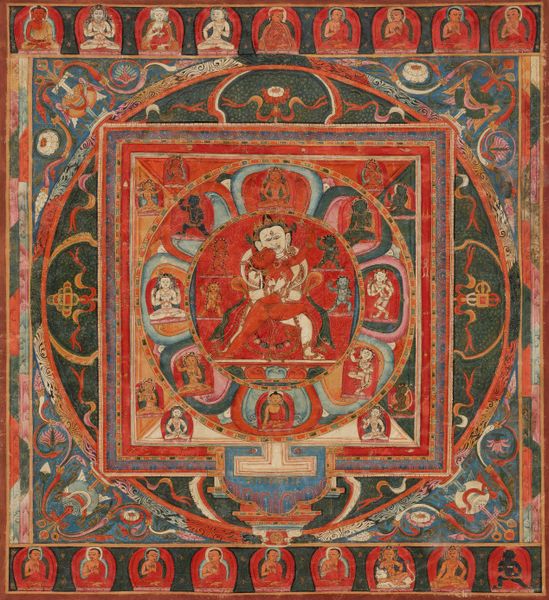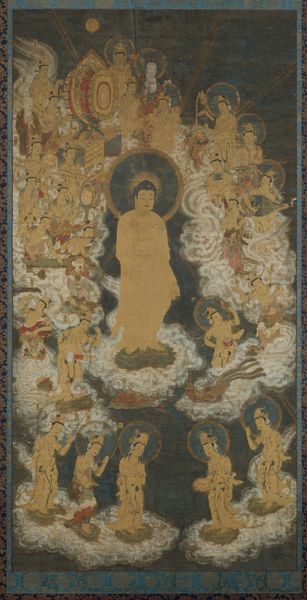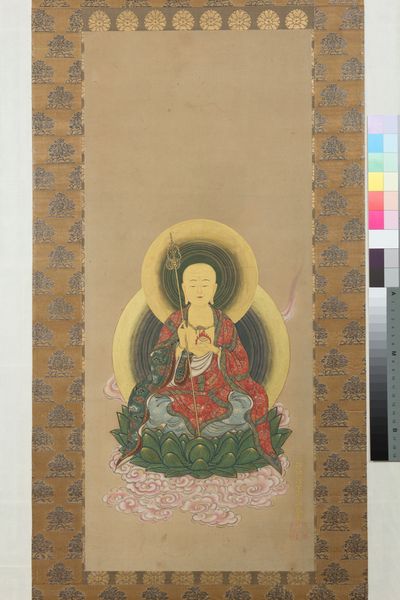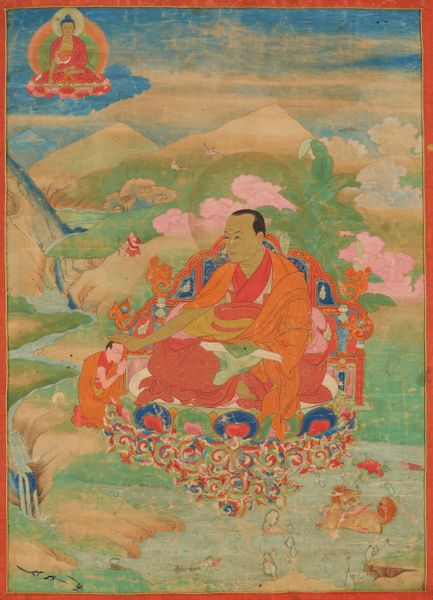
Thangka of an eleven-headed Avalokiteshvara c. late 18th century
0:00
0:00
tempera, painting, ink
#
narrative-art
#
tempera
#
painting
#
asian-art
#
figuration
#
ink
#
geometric
#
orientalism
#
miniature
Dimensions: 29 3/16 x 17 15/16 in. (74.14 x 45.56 cm) (image)42 1/2 x 25 3/8 in. (107.95 x 64.45 cm) (framed)
Copyright: Public Domain
Editor: This is quite a sight! An anonymous Thangka, painted with tempera and ink in the late 18th century, called "Thangka of an eleven-headed Avalokiteshvara." The sheer number of figures is astonishing. I'm curious, what narrative or ideas do you think the artist wanted to convey? Curator: Well, darling, imagine stepping into the mind of a Tibetan monk nearly three centuries ago. It's a wild garden of devotion, isn't it? This isn’t just paint and ink, it's a visual poem, a cosmic blueprint. Avalokiteshvara, with those eleven heads, is compassion in overdrive, each face gazing in a different direction, seeing every plea in the universe. The multiple arms—can you count them all?—aren’t just for show. They're reaching out to help, to heal, to offer solace. Each gesture, each color, each tiny detail sings of the interconnectedness of everything. Notice the gentle way they're seated. Editor: It's…a bit overwhelming! But now that you mention it, I see the individual deities or figures sitting in the geometric formations. Is it like a family portrait almost? Curator: More like a divine ecosystem, love! Think of it as the spiritual internet of its day, connecting earthly realms to celestial planes. Each figure isn't just someone to worship, but an aspect of our own potential. Can you feel how the energy flows? It is an act of contemplation rather than something to simply observe. Editor: I guess I hadn’t thought about it as being about our own potential! That shifts things entirely. Curator: Art, like life, has its funny way of surprising us, doesn’t it? Every look at the Thangka reveals another world of ideas. It makes me smile!
Comments
minneapolisinstituteofart almost 2 years ago
⋮
This thangka, a scroll painting on cloth, was designed to be hung in a monastery or private shrine. Easily rolled for storage or transport, thankas are used as meditational tools. The central deity is Avalokiteshvara, the bodhisattva of compassion, who takes a form with 11 heads and multiple arms, emphasizing his boundless knowledge and ability to help innumerable devotees at once. The bodhisattva is shown emanating from a chorten or stupa (a structure that holds relics—a model of which is seen in the case behind), which represents the historical Buddha; celestial Buddhas are depicted in surrounding heavenly roundels. Below, earthly beings make offerings to Avalokiteshvara.
Join the conversation
Join millions of artists and users on Artera today and experience the ultimate creative platform.
